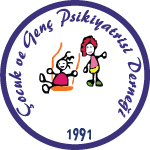ABSTRACT
Objective:
With this study, we aimed to investigate the service demands, sociodemographic characteristics and clinical profi les of Syrians who had applied to the child and adolescent mental health outpatient clinic of Bakırkoy Research and Training Hospital for Psychiatric and Neurological Diseases (BRSHH).
Method:
All applications to our child and adolescent mental health outpatient clinic in the context of "temporary protection status" between the years 2011 and 2016 were included. Clinical follow-up fi les of applicants were collected from the hospital archives and required data in line with the aims of the study were extracted.
Results:
Of total 50 participants included in the study, 34 (68%) were male and mean age was 11,24 years. Forty-three participants (86%) were unable to speak Turkish at all, while 41 (82%) had not been attending any type of school at the time of the assessment. Most common psychiatric diagnoses were autism spectrum disorders (22%), intellectual disability (16%), trauma and related disorders (16%), dissociative disorder (14%), and mood disorders (12%). Sixteen (32%) of the participants had applied to the clinic with a request to be evaluated in order to obtain a disability report and it was observed that such applicants tended to continue their follow-up sessions much more regularly compared to those that had applied for other reasons.
Discussion:
It`s necessary to increase follow-up rates for population in need of treatment and health care services. Meanwhile, we believe it is important to recognise the need for further epidemiological studies to be carried out in future, to specifi cally determine the status of mental health and access to health care services of Syrian children. Moreover, aiming to increase the rates of school attendance as well as creating special educational institutions designed for Syrian children are crucial.



